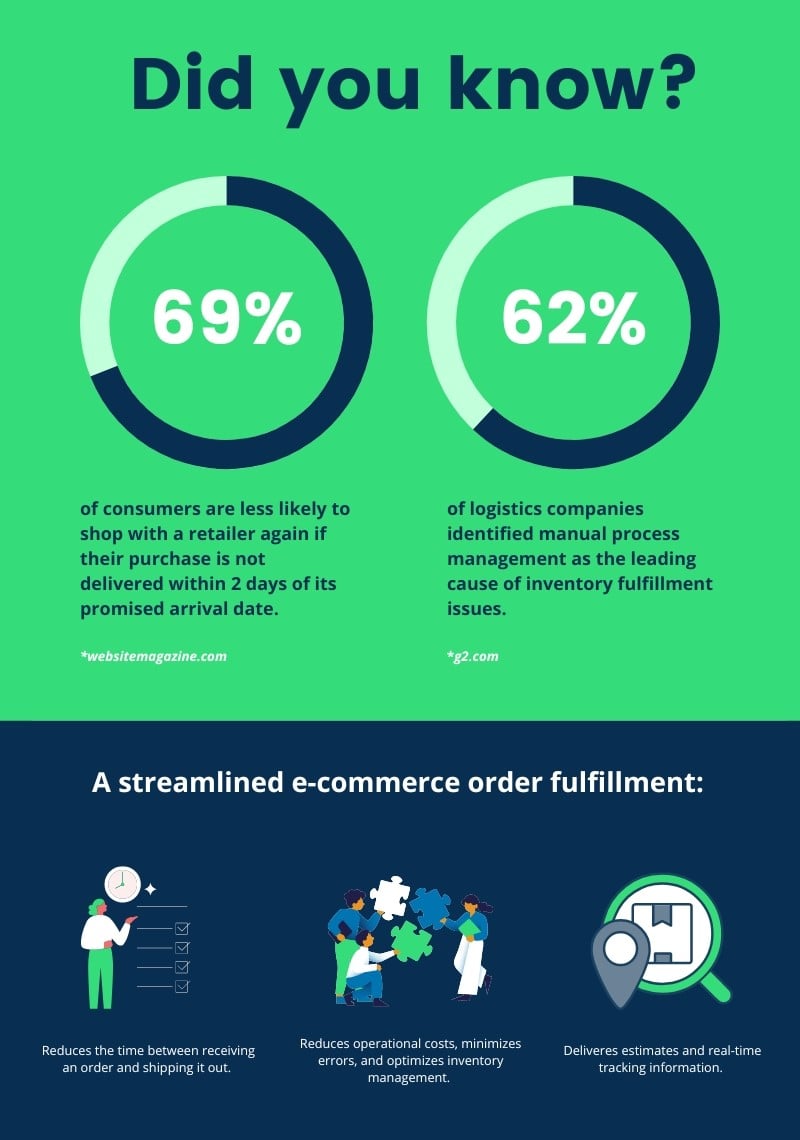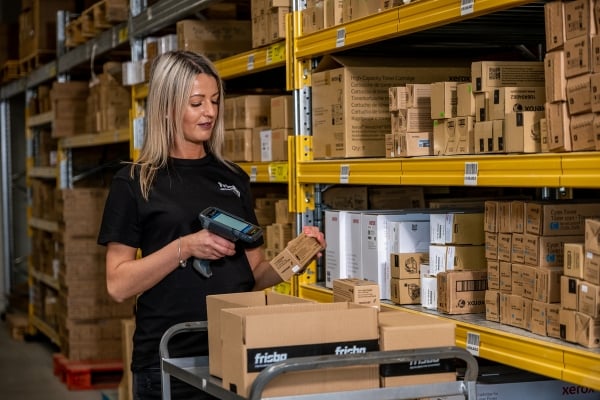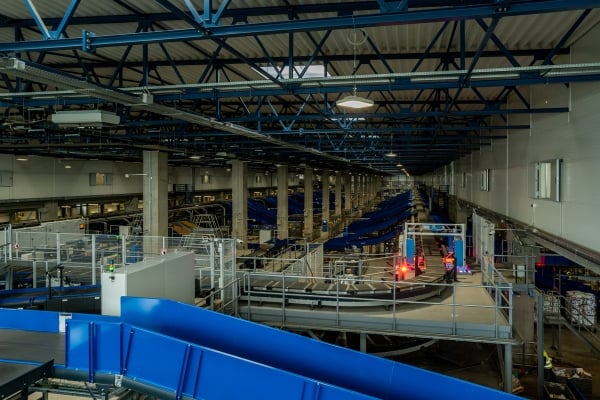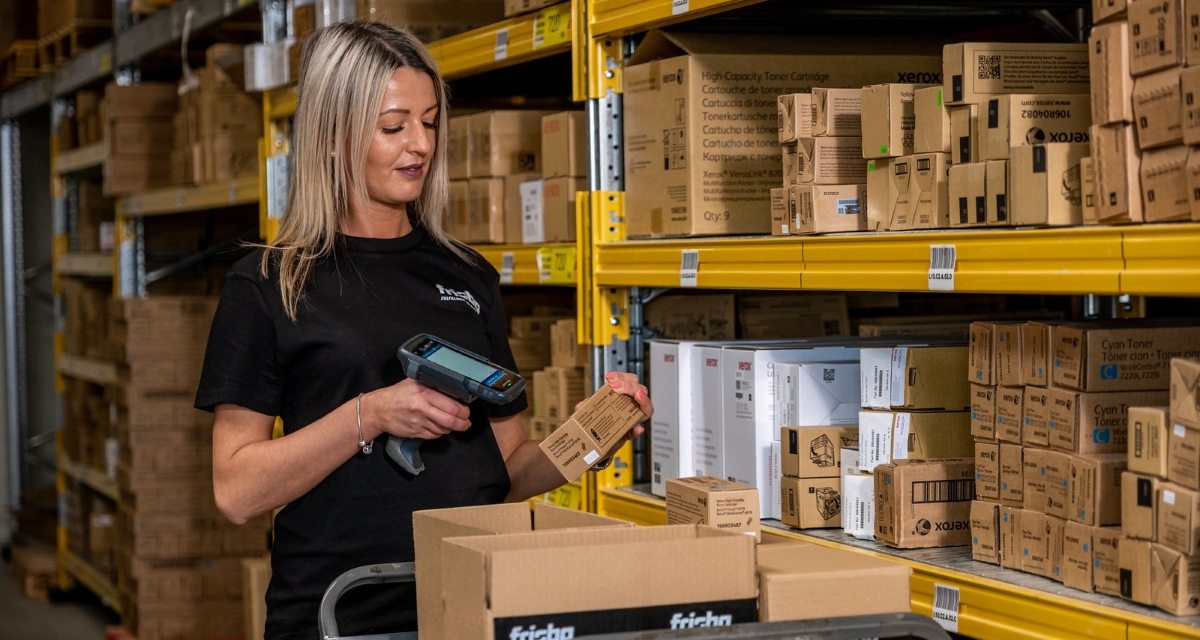The explosive growth of the e-commerce industry has amplified the significance of streamlined order fulfillment processes. A well-crafted and organized system for handling order fulfillment is essential for any business owner. This guide offers a comprehensive overview of the involved steps to facilitate your order fulfillment process and streamline your logistical operations.
Table of contents:
1. What are the components of the order fulfillment process?
2. The benefits of an efficient order fulfillment process.
3. The key steps to improve in the order fulfilment process.
Understatding the e-commerce order fulfillment process.
The order fulfillment process is essential in online selling because it means more than just delivering a product. It also establishes trust and reputation with customers. Your logistics strategy should encompass key steps such as inventory management, order processing, picking and packing, and shipping.
By honing these steps, you can minimize errors, elevate customer satisfaction, and ultimately expand your online business.
What are the components of the order fulfillment process?
The order fulfillment process requires several key components that work in tandem. Every step, from the proper warehousing of products and order processing to the ultimate delivery of products, plays a pivotal role in the process.
Warehousing and storage
Your products deserve a secure home, which is where warehouses and fulfillment centers come into play. These spaces optimize storage, retrieval, and inventory management, ensuring your items remain in top-notch condition. With proper temperature, humidity, and light control, your products are ready to ship without any compromise on quality.
Order placement and processing
Once a customer visits an online store's website or mobile app and selects their desired products, the order fulfillment process kicks into gear. The online store's system quickly verifies the customer's details and confirms the availability of the chosen items. This stage also involves securely capturing the necessary payment information to ensure a smooth transaction.
Inventory management
Efficient inventory management is crucial for e-commerce stores to meet customer demands and fulfill orders promptly. Utilizing real-time monitoring, updating stock levels as purchases are made, and restocking items when necessary ensure that your inventory is always well-supplied and ready to go.
Picking and Packing
After receiving an order, the next step is to locate the items within the warehouse or storage facility. Efficient picking methods, like zone or batch picking, make this process seamless by optimizing routes and minimizing the time spent moving between products. After picking the items off the shelves and checking that they are undamaged, it's time to package them. Proper packaging will ensure that products remain intact during transportation.

Shipping and delivery
Once your products are picked, packed, and ready to go, it's time to hand them over to the shipping carrier or logistics provider. This stage involves generating shipping labels, coordinating pickup or drop-off of packages, and managing the logistical aspects of transportation. Online stores may work with multiple carriers to ensure reliable and timely delivery services for their customers.
Order tracking and status updates
Customers crave transparency and want to stay informed about their order's journey. With order tracking, they can monitor every step, from the moment their package leaves the warehouse to its final destination. Keeping customers engaged with regular status updates, including order confirmation, processing, shipping, and delivery notifications, is key to building trust and loyalty.
Quality control
It is essential to have quality control measures in place to detect and resolve any issues, such as damaged products, incorrect items, or packaging errors before they reach the customer. Visual inspections, functional testing, and verification of product specifications are all key components of this stage.
Returns processing
Inevitably, customers may request returns or exchanges. To ensure a seamless resolution for any dissatisfaction or issues with received products, returns processing is mandatory. This includes managing return authorizations, providing clear instructions for packaging and shipping the items back, inspecting returned products for quality control, and processing refunds or exchanges.
Payment processing
Smooth and secure payment processing systems are integral to building customer trust in e-commerce. By validating payments, authorizing transactions, and transferring funds from customer accounts to the online store seamlessly, payment processing protects sensitive financial information and ensures a hassle-free checkout experience.
The benefits of an efficient order fulfillment process
Efficient order fulfillment processes offer e-commerce businesses numerous advantages by optimizing the entire journey from warehousing and order placement to product delivery and returns management.

Here's what a streamlined fulfillment process can do for any e-commerce business:
Enhanced customer satisfaction and loyalty
According to a study by Conveyco, 38% of online shoppers will abandon their order if the delivery will take longer than a week. This shows the importance of a well-executed order fulfillment process that can guarantee timely and accurate deliveries, reducing the likelihood of order cancellations and lost sales. A streamlined fulfillment process that ensures orders are delivered in pristine condition and on time can lead to greater customer satisfaction and loyalty, resulting in repeat business and referrals.
Increased operational efficiency and cost savings
A well-structured and organized order fulfillment process not only enhances customer satisfaction but also brings cost savings and increased operational efficiency for e-commerce businesses. By minimizing errors and delays, a streamlined process speeds up turnaround times, leading to increased productivity and reduced reliance on additional labor and resources.
A study on logistics automation revealed that the majority of respondents, 62%, identified manual process management as the main cause of inventory fulfillment issues.
Automating tasks like order processing, inventory management, and shipping label generation can free up employee time for other crucial responsibilities. Furthermore, an efficient process can lower the occurrence of returns and exchanges by ensuring orders are promptly fulfilled and accurately shipped, resulting in cost savings and customer delight.
Competitive advantage in the e-commerce market
A streamlined e-commerce order fulfillment can give e-commerce businesses a competitive edge by:
- Reducing the time between receiving an order and shipping it out. This results in faster delivery times and improved customer satisfaction.
- Reducing operational costs, minimizing errors, and optimizing inventory management. This can lead to competitive pricing while maintaining profitability.
- Delivering estimates and real-time tracking information. This can elevate customers' overall shopping experience, setting you apart from competitors.
Improved inventory management and accuracy
Approximately 34% of retail businesses shipped an order late because they sold a product that was out of stock.
Implementing effective inventory management practices can help online stores optimize their stock levels and minimize the risk of stockouts or overstocking.
With accurate inventory tracking, e-commerce businesses can offer customers real-time product availability information, minimizing the chances of ordering out-of-stock items. This ensures a smoother shopping experience for customers and helps businesses make informed decisions about purchasing and restocking.

Streamlined shipping and delivery processes
According to a Statista survey, 41% of online shoppers worldwide desire to receive their purchases within 24 hours of placing their order, while 24% expect delivery within 2-3 days.
A well-optimized order fulfillment process guarantees swift and precise processing and shipping of orders. This results in meeting your customers' expectations for prompt and dependable delivery, an essential aspect of maintaining customer satisfaction and loyalty.
The key steps in the order fulfillment process
To enhance your e-commerce order fulfillment strategy, there are numerous ways to approach it, depending on its complexity. The first step is to audit the entire process, examining all stages involved in fulfilling orders — from when customers place orders until they receive them.
Here are the e-commerce order fulfillment process steps to concentrate on:
Analyze the current order fulfillment process
Thoroughly scrutinizing each step of the fulfillment process allows businesses to pinpoint bottlenecks, inefficiencies, and areas for improvement. This entails assessing key performance indicators such as order processing time, picking and packing accuracy, shipping speed, and customer satisfaction metrics. With data collection and analysis, businesses can gain valuable insights into specific areas that require optimization and attention.
Review your order fulfillment process to see if you can streamline or optimize any steps, especially ones that are time-consuming or labor-intensive.
Set clear goals and objectives
Setting measurable and attainable objectives can provide a roadmap for businesses to improve their order fulfillment process. With clear direction, they can focus their efforts on specific areas that need improvement. These objectives may include:
- reducing order processing time;
- improving order accuracy rates;
- increasing on-time delivery rates;
- enhancing customer satisfaction ratings;
Enable end-to-end order visibility
This means two things: transparency and real-time information to both your business and the customers throughout the entire journey of an order.
With the implementation of strong order tracking systems and communication channels, businesses can provide complete visibility into the various stages of order processing, such as order confirmation, fulfillment, shipping, and delivery. This empowers customers to track their packages, receive prompt updates, and gain a crystal-clear understanding of when their orders will arrive.
End-to-end order visibility empowers businesses to anticipate and address any potential hiccups or delays, keeping customers informed with timely updates and expectations management. This level of transparency not only enhances customer satisfaction but also reduces inquiries and support requests, fostering trust and confidence in the business.
Optimize warehouse operations
It's important to ensure that your products are kept safe and easily accessible in your warehouse. This ensures that your items are protected from damage and you can quickly locate the products you need when fulfilling orders.
By streamlining and enhancing warehouse processes, businesses can achieve greater efficiency, accuracy, and speed in fulfilling customer orders. This involves optimizing the layout and organization of the warehouse to ensure easy access and efficient movement of inventory.
Here are some warehouse optimizations examples:
- Effective inventory management systems, such as barcode scanning or RFID technology, enable accurate tracking and faster retrieval of products.
- Utilizing efficient picking and packing methods, such as zone picking or batch processing, minimizes travel time and increases productivity.
- Automated storage and retrieval systems (AS/RS) is another example of optimizing warehouse operations that eliminates the need for manual searching and reduces travel time, resulting in faster order fulfillment.

Incorporate order fulfillment automation
When e-commerce companies incorporate automation into their order fulfillment processes, they often experience significant cost savings and productivity gains.
Let's say your business handles 1,000 orders daily an,d each order takes 10 minutes to process manually—you could be wasting up to 100 hours of labor every month.
There are some automation tools that can be beneficial:
- Automated order management software
Automates order processing, inventory management, and customer communication, optimizing efficiency and accuracy in the fulfillment process.
- Automated shipping and tracking
Facilitates the creation of shipping labels, selection of carriers, and real-time tracking updates, allowing seamless and transparent shipping management.
- Automated returns processing
Automates return label generation, facilitates efficient inspection and restocking processes, improving the speed and accuracy of return handling.
- Automated order routing
Intelligently routes orders to the most suitable fulfillment centers or warehouses based on various factors, reducing manual decision-making.
Implement quality control measures
By implementing quality control measures, such as visual inspections, functional testing, weight measurements, barcode scanning, or sample inspections, businesses can minimize the likelihood of shipping defective products to customers. This enhances customer satisfaction and loyalty and can be done either by themselves or with specialized logistics partners.
Offer multiple shipping options
Offering various shipping options to customers is essential as they have unique preferences and needs. By providing different shipping methods like standard, expedited, or express shipping, businesses can cater to different delivery timeframes and budget limitations. This enables customers to choose the shipping option that best suits their needs.
For instance, if a customer needs to receive an order fast but is price-conscious, they can choose expedited shipping instead of standard or express.
Monitor and measure performance
Regularly monitor and measure performance by establishing key performance indicators (KPIs) and analyzing relevant metrics. This will provide valuable insights into the efficiency and effectiveness of your order fulfillment operations.
A good way to start is by identifying and tracking metrics that are directly related to order fulfillment, such as:
- Average order processing time
- Order accuracy rate (percentage of orders shipped without errors)
- On-time delivery rate (percentage of orders delivered within the promised timeframe)
- Order fill rate (percentage of ordered items that are successfully fulfilled)
- Order cycle time (time taken from order placement to delivery)
- Returns rate (percentage of orders that are returned by customers)
Recap
To thrive in the e-commerce industry, a seamless order fulfillment process is vital. Every step of the way, from proper warehousing and inventory management to efficient picking, packing, and on-time shipping, plays a crucial role in ensuring customer satisfaction and loyalty. By incorporating automation tools, optimizing warehouse operations, and offering various shipping options, businesses can improve their order fulfillment process and gain a competitive edge. Measuring and monitoring performance with relevant metrics is also crucial for continuous improvement.
E-commerce businesses that want to thrive should have an efficient way of fulfilling orders. Use this step-by-step guide to simplify your operations and grow your online business as the e-commerce landscape continues shifting.
At Frisbo, anyone can optimize the order fulfillment process for their e-commerce business with a few clicks. Our extensive fulfillment network of 52+ European warehouses allows online retailers to be flexible in where they store their products, thus simplifying local and cross-border logistics management.
Moreover, our integrated solution offers a range of fulfillment services, including warehousing, pick and pack services, and Next-Day shipping to over 30 countries. With real-time logistics tracking, effortless inventory management, and seamless e-commerce platform integrations, we empower e-commerce people to focus on scaling their sales and improving customer satisfaction rates.
Do you have any specific questions about how you can improve the e-commerce order fulfillment process for your business? Please send us a message.





